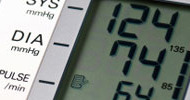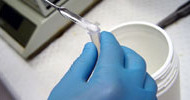Description
Asynt in conjunction with the Department of Chemistry, University of St Andrews (UK) and Advanced Chemical Safety Inc. (USA) have produced an 8-page illustrated document to provide laboratory staff with an IN BEST PRACTICE GUIDE to safe use of heating block systems.Heating blocks provide a safe, convenient and productive alternative to heating mantles and oil baths for heating round bottomed flasks, tubes and vials. Used in combination with a standard hotplate stirrer - heating blocks such as the Asynt DrySyn range have proved themselves with their ability to outperform the heat-conducting properties of oil baths. They pose a far lower fire risk and their use makes the clean-up of glassware far easier as there is no residual oil contamination on the outside of the flasks. In addition to accelerating your chemical reactions - heating blocks ensure a safer, cleaner, healthier working environment.
Drawing upon the expertise and experience of Asynt and independent chemistry experts the illustrated IN BEST PRACTICE GUIDE leads you through glassware inspection, setting up your reaction, heating your reaction and the post-reaction cool down phase.




























